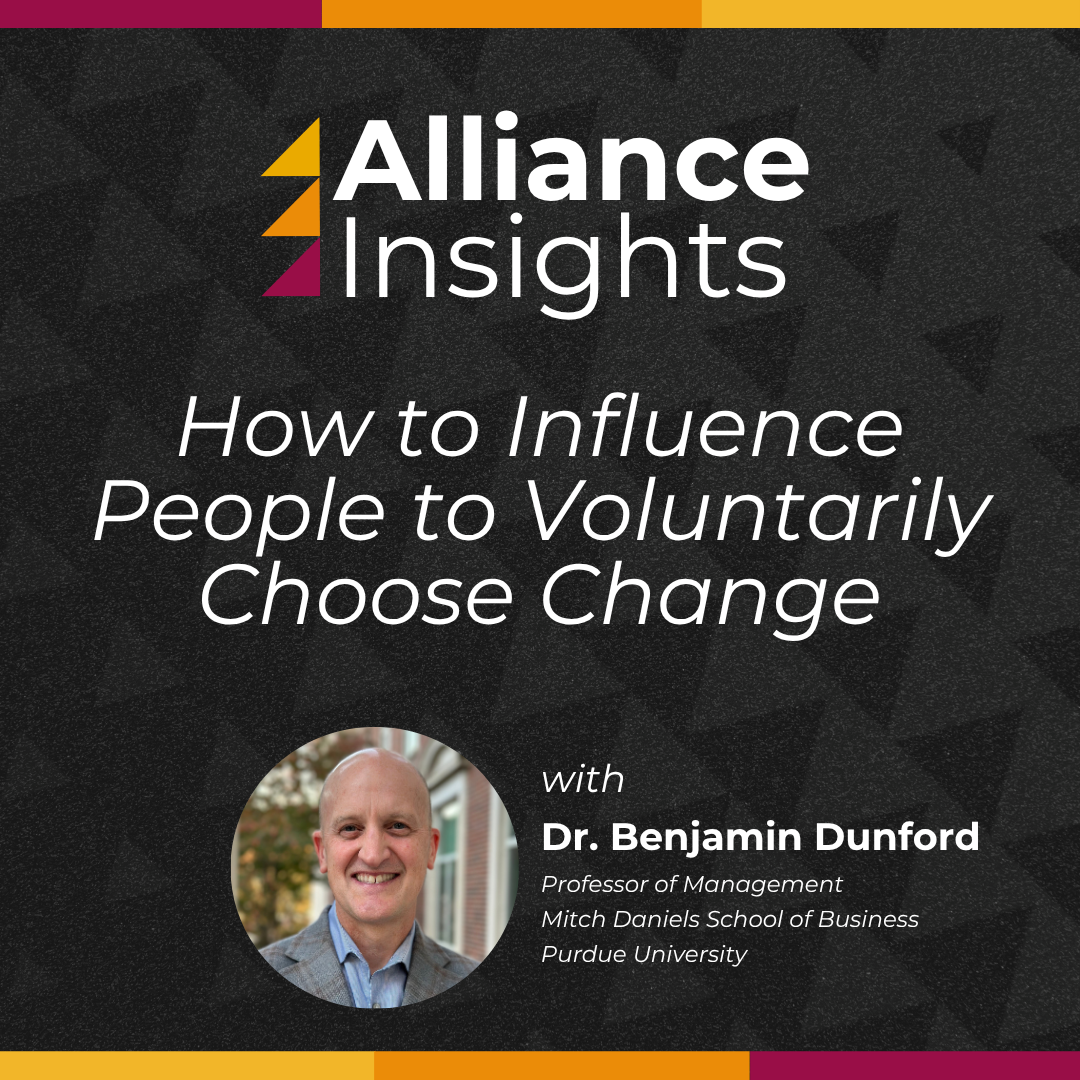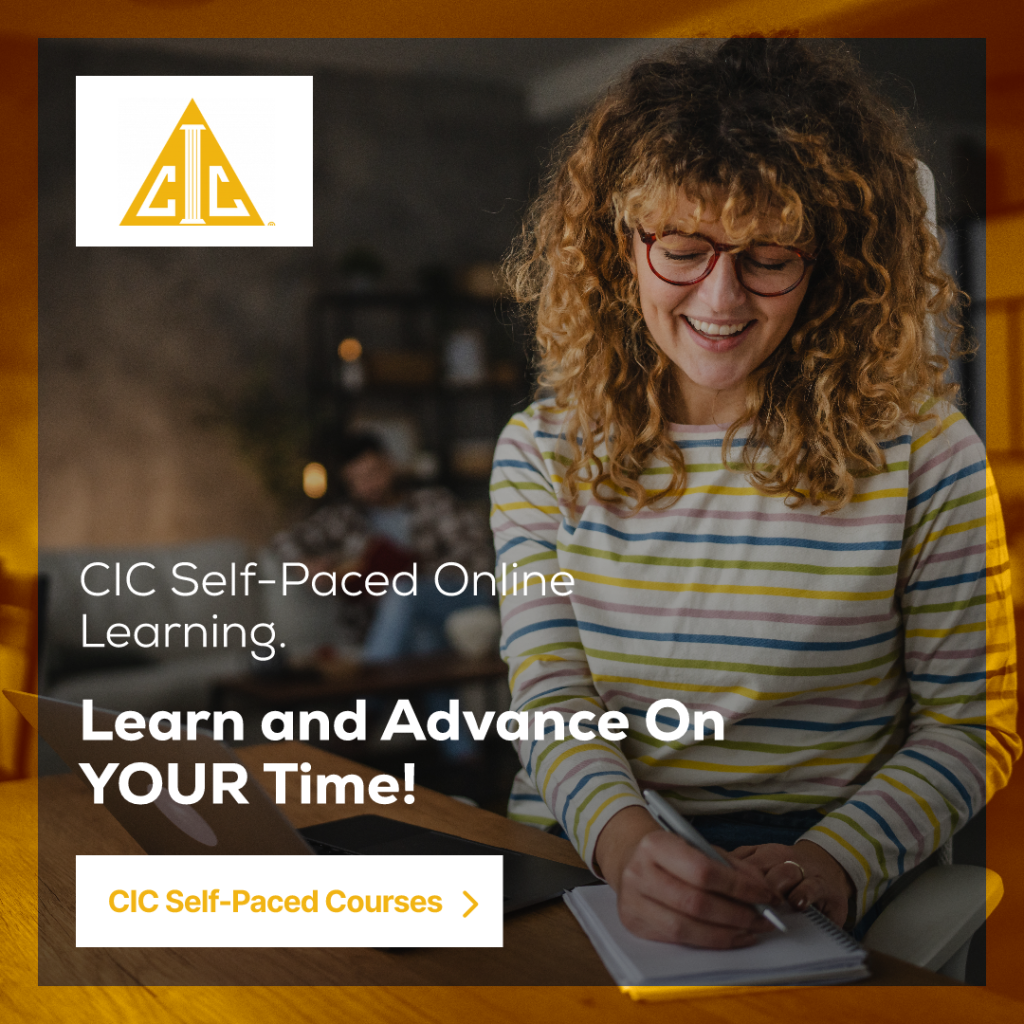How do you get people to choose change and to commit to it? In this Alliance Insights session, Dr. Benjamin Dunford, Professor of Management at Purdue University, shares practical, research-backed strategies for leading change that sticks.
Watch the full recording to explore the psychology of change, accountability, and leadership through compelling stories and real-world frameworks.
Change Isn’t the Hard Part; Influencing It Is
Using the unexpected metaphor of sweetbreads, Dr. Dunford compares change to something that’s good for you yet often resisted. Drawing from psychologist Kurt Lewin’s 1940’s study, he explains that people are more likely to embrace change when they are invited to solve problems, not just told what to do.
Two Tools to Guide Change
Dr. Dunford introduces two foundational models:
- Lewin’s Change Model: Unfreeze → Move → Refreeze
- Beer’s Formula: The likelihood of change happening increases as the combination of three items exceeds the cost of change. The three items are: 1) dissatisfaction with the status quo; 2) clarity of the model and vision of the future; and 3) process for managing change.
Dr. Dunford uses a fictional insurance case study to show how change efforts fail when leaders rely on authority without involving their teams.
Accountability: The Missing Link
Avoiding hard conversations leads to stalled change. Dr. Dunford’s research shows that leaders who hold others accountable are seen as more supportive, not less. His PAUSE Framework (Priority, Aim, Understanding, Standards, Environment) equips leaders to have meaningful, non-defensive accountability discussions.
Final Insight
People are agents, not objects. If you want commitment, start with empathy, clarity, and shared purpose. Influence happens when people feel seen, heard, and supported.












